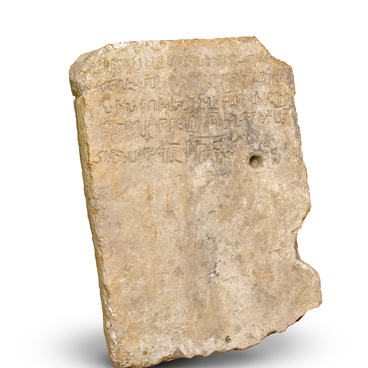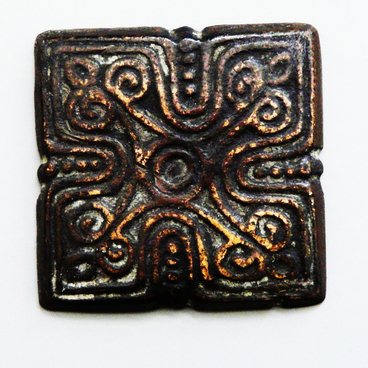The first mace appeared in the Stone Age. At that time it was made from a sturdy stick and a cobblestone attached to its end. In the Bronze Age, the cobblestone was replaced with a metalhead; it was most often cast ball-shaped. In the Middle Ages, this weapon was popular in the Middle East and India. By that time, the maces had sharp spikes, against which any armor was powerless.
In Russia, the mace was first used in the 11th century. The space inside the hollow top was filled with pebbles and balls — they intensified the blow due to inertial motion. In the Volga Bulgaria, maces appeared in the 11th century, but they were most widespread in the 12th-13th centuries. This weapon was used by both noble and ordinary warriors.
The mace was from 50 to 80 centimeters long, and the head weighed approximately 300 grams. The weapon could strike the enemy in any direction, unlike, for example, an ax. At one time, the mace was used by both infantry and cavalry. Moreover, the weapons for the riders were made larger and heavier.
Compared to other types of weapons, the mace had both serious advantages and disadvantages. Among the advantages was that the mace was quicker to learn than the sword. The mace, unlike the battle-ax, never got stuck in the shields or armor of the enemy. It was used more often when the enemy needed only to knocked unconscious or taken prisoner.
A serious flaw in this weapon was that it was impossible to defend against oncoming strikes. Therefore, the warrior additionally had to use a shield, armor, and other means of warfare. The mace was not suitable for an offensive in formation, because an impressive swing was required.
When the mace was replaced with other weapons, in some countries it became an attribute of power. For kings and emperors, it was made of precious metals, decorated with gold and lots of semi-precious stones.
In an exhibit from the collection of the Bolgar Museum-Reserve, the striking part of the mace is cast from two hemispheres. The head has 12 thorns — these are pyramids with three or four faces.
In Russia, the mace was first used in the 11th century. The space inside the hollow top was filled with pebbles and balls — they intensified the blow due to inertial motion. In the Volga Bulgaria, maces appeared in the 11th century, but they were most widespread in the 12th-13th centuries. This weapon was used by both noble and ordinary warriors.
The mace was from 50 to 80 centimeters long, and the head weighed approximately 300 grams. The weapon could strike the enemy in any direction, unlike, for example, an ax. At one time, the mace was used by both infantry and cavalry. Moreover, the weapons for the riders were made larger and heavier.
Compared to other types of weapons, the mace had both serious advantages and disadvantages. Among the advantages was that the mace was quicker to learn than the sword. The mace, unlike the battle-ax, never got stuck in the shields or armor of the enemy. It was used more often when the enemy needed only to knocked unconscious or taken prisoner.
A serious flaw in this weapon was that it was impossible to defend against oncoming strikes. Therefore, the warrior additionally had to use a shield, armor, and other means of warfare. The mace was not suitable for an offensive in formation, because an impressive swing was required.
When the mace was replaced with other weapons, in some countries it became an attribute of power. For kings and emperors, it was made of precious metals, decorated with gold and lots of semi-precious stones.
In an exhibit from the collection of the Bolgar Museum-Reserve, the striking part of the mace is cast from two hemispheres. The head has 12 thorns — these are pyramids with three or four faces.

